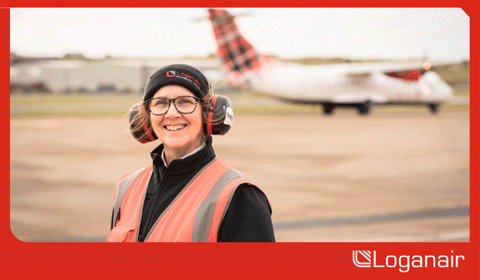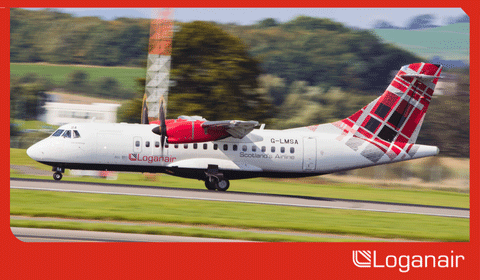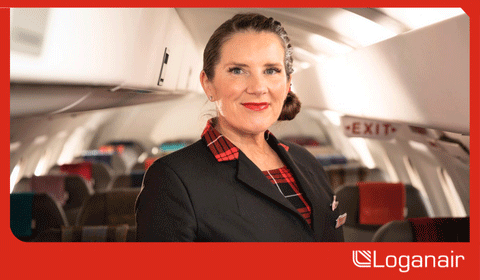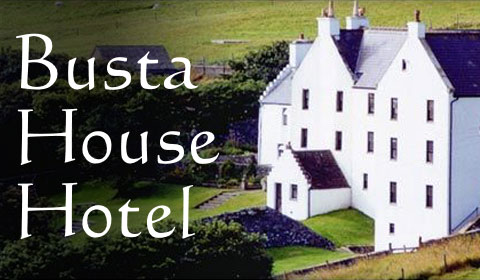News / Live: Northmavine primary debate
We’re here reporting live from Lerwick Town Hall where the SIC’s education and families committee are debating the future of the Urafirth and North Roe primary schools. The recommendation from the children’s services department is to close the two schools and send all the children in nursery and primary classes to Ollaberry.
There has been huge opposition from local communities, as there have been to all the proposed school closures, which are a key plank in the SIC’s budget cutting programme. A final decision will be made at the full council on Wednesday.
SUMMARY
- Education and families committee votes 7-4 to keep North Roe open. Chairwoman Vaila Wishart moved to shut it, but North Mainland member Andrea Manson’s amendment wins the day;
- Committee unanimously supports Wishart’s motion – seconded by a “delighted” Manson – to keep Urafirth primary and nursery open.
1.21pm – Summing up her amendment, Andrea Manson says it is important to prove that consultation processes are “not a box-ticking exercise”. We have to listen to the communities, and the North Roe community wants to keep the school, she says.
Speaking in favour of her motion, Wishart accepts there is a “cyclical” nature to school rolls, but next year North Roe will have five pupils with “no sign of it going back into double figures any time soon”. Children from the two schools which closed last year are “thriving in much larger classes”. We know that Ollaberry is an excellent school – five “excellents” from HMIe inspectors. North Roe is not a bad school, but a larger cohort brings many advantages.
From an educational point of view, the advantages greatly outweigh tthe “perceived” disadvantages of travelling distance, Wishart adds.
Amendment defeats motion by 7-4. North Roe stays open.
In relation to Urafirth primary and nursery, Wishart moves to keep them open. Manson now seconds her. No vote necessary.
Become a member of Shetland News
Education committee votes to keep both Urafirth and North Roe primaries, along with Urafirth’s nursery, open. Now it’s over to tomorrow’s Full Council meeting.
1.18pm – Robinson says officers were asked about journey time and said they were “confident” it could be done within the time set. He says the economic “bottom line” has been “reached and passed” in North Roe: it is a real consideration, and we must consider it.
1.15pm – Committee chairwoman Vaila Wishart – I think it’s depopulation which leads to consultaiton on closures, and that’s what’s happened over many years. The drift into towns just does not stop, and it’s not just a Shetland phenomenon, it’s a worldwide phenomenon.
She notes that roads to Northmavine are no different to other parts of the country, and people in bad weather have to make a judgement on whether it’s safe to make a journey.
Councillors have a duty to take community’s anxieties into consideration. But they also need to take a holistic look at the situation, particularly the educational advantages. There are benefits from children being educated together – if a very small class of, for example, five as there will be in North Roe next year, they’re unlikely to have contact with children of same age. Making friends is an important part of a child’s development.
Wishart says she is not going to move for closure in Urafirth. But North Roe has “gone beyond the point of no return”, and I don’t think 30 minutes is excessive travel time for Ollaberry. I move that we endorse the first recommendation in the report, 2.1(a) in relation to North Roe Primary School. Seconded by political leader Gary Robinson.
North Mainland councillor Andrea Manson moves an amendment that North Roe should stay open. The school is a “vital” part of community – it’s the only thing this council provides to the area. You cannot get from the furthest areas of North Roe to Ollaberry in 40 minutse – it has been proved more than once, was one of main reasons the school was saved last time. Because of a mini baby boom in North Roe and Lochend it is set for numbers to double.
1.06pm – Peter Campbell says debate had potential to be very emotive, but has been debated calmly and that tone was set by Edwards. Benefit of history is that we can learn from it, and we have over the years “battered our rural communities” with closure plans for the last decade. Fortunately they have not bowed down to the pressure that’s been applied, Campbell says, and it’s time the council as a whole recognises the fragility of communities and offers support to them – not removing a “key component of their economic wellbeing”.
“We are a peripheral area”, Campbell says. It is only right that we give the same support to our peripheral communities.
1.03pm – councillor Billy Fox, who stayed in Eshaness for seven years with eldest bairns attending old Urafirth school until 1993, said at that time there was not a lot going on in those communities compared to what there is now. New school played a major part in how community came on – can’t believe we’d think about closing that 21 years down the line. It’s a first class school, and would be “absolutely criminal” and a “real body blow” to that community.
Moving onto North Roe, I have a degree of difficulty in terms of educational quality. I do share George’s feeling that very low rolls are not really good for social interaction etc., but I think we have to look wider, as a council, and the saving that we’d make in North Roe of £69k is nothing. If we put that into some kind of regeneration it would go nowhere at all. The best way of maintaining the benefits is to actually leave the school open.
Also thank the officers – I think Mrs Edwards went through “gruelling” questioning and “aqcuitted herself very well” this morning. Education officials have to look at education, so Fox offers a “degree of sympathy” for job they’re being asked to do.
12.58pm – Olnafirth and Bressay were effectively closing themselves, says Martin Tregonning, but we are looking at proactively shutting these. We can’t dismiss this as just being a cost-saving exercise or dismiss it out of hand.
Tregonning: the school isn’t fundamentally there to provide employment for teachers and school staff. Early years units can be exceptionally successful, combining nursery and P1 pupils. Urafirth would be considering, if they stay open, having such a unit.
Revival in Hillswick with young families moving in is going to continue, Tregonning says. Many of the things you can do in a larger school may actually become more achievable in Urafirth in years ahead.
The situation with North Roe is more difficult – appreciate the roll has gone up and down. I’m concerned that it’s not going up at the moment. We’ve got growth in Urafirth, but less so in North Roe. The issues I can’t get away from, Tregonning says, is the cost and it’s a more expensive place to run. Study says health impact is going to be negative, and we can’t dismiss that. We can’t get away from the transport issues – we can’t make the roads shorter. The big unknown is regeneration – if the school is key, we haven’t seen regeneration since saving the school in 2011 – what’s going to be different now?
Tregonning says it’s not going to be an easy decision either way.
12.52pm – Robert Henderson – from what we’ve heard primary education costs not “out of kilter” with rest of Scotland, but it is in secondary education. He lays down gauntlet to Gary Robinson – find a system of education so all island groups’ costs are the same. I don’t think we were “elected to tear the heart out of any community in Shetland.. and if we close community schools that’s exactly what we’ll be doing”.
He says a community without a school doesn’t attract the young families that every community needs, for looking after the elderly. I’d ask members to “think long and hard” about decision.
Robinson: the figures we’ve had in previous years have been good. What we do know, and I know that Mike Russell likes to speak about education budgets though he has difficulty defining what that is, I can only assume that is what we get from the Scottish government for education. That’s £29.5m and in the most recent year, when figures were published in 2012/13, we spent £48.5m – so there is a £19m gap.
12.45pm – Religious representative Tom MacIntyre – congratulations to Edwards on a “very competent” report. But advises council to think very carefully about its decision tomorrow: Shetland is a society of very distinctive communities, and focus and heart is sometimes in the school, providing a centre of focus for the community, and I think we have to bear that in mind before we close any school.
Vice chairman George Smith adds his thanks to Edwards for presentaiton, and how all officials answered the many questions. He has been weighing up whether to support recommendations, the educational benefits are “difficult to prove, but equally difficult to refute”. In my view, the professional view taken by Mrs Edwards is a reasonable position for her to take, and should be respected and recognised as such.
Smith says separate classes, opportunity for pupils of same age to mix has to help personal social development. He accepts that parents/supporters of Urafirth and North Roe that good quality of education can be achieved in smaller schools. It is more difficult the fewer pupils there are.
Not convinced there’s a need for three schools in Northmavine for the area to flourish. Aware of unresolved concerns about proposed transport arrangements. Having read the socioeconomic reports, Smith believe that educational benefits for pupils from a school the size of North Roe being part of a larger school will outweigh the disadvantages. In respect of Urafirth there would also be benefits, but I can understand and appreciate community’s view.
He adds: “If you only do what you’ve always done, you’ll only get what you always get.”
12.42pm – Campbell says we are creating a cyclical pattern. I remember when Ollaberry rose to 47 from 15, North Roe was 49. Over the last 40 years North Roe has fluctuated between one and two teacher school on many occasions, and what we have had is schools faced with problem arising from a significant outmigration in ’50s and ’60s.
We need to bear in mind comments in socio economic studies, which do not take into account the number of part time jobs associated with the school. We need to consider the long term effect on these communities.
Manson: One of the main prioirities is encouraging strong communities and one of the maiin govt policies is to protect crofting communities, and closing either of these schools flies in the face of our corporate plan. This should not be about money.
It has to be of educational benefit to have bairns taught in a small school, rather than bairns sharing classrooms with two teachers. It would be impossible to concentrate, like watching the TV with the radio on.
Manson has diffculty getting her head around the figures. £475 for the Lochend feeder service, 200 runs at £2.37/run. Good luck finding a taxi who will accept that.
It will cost far more to try and get life back into the communities with ongoing costs for maintaining empty building etc. W can’t do it within 40 minutes, so we shouldnt’t even be discussing this and it is a very dangerous precedent to and “as far as possible”. It is either 40m or not.
In North Roe we would be losing the only key service the council provides in te area. There is nothing else.
Urafirth is excellent, the newest in Northmavine, excellent outside services, Manson lists a whole range of things hey do that they won’t be able to do in Ollaberry because they have no green space.
She says we have excellent head teachers at both schools. There is a major baby boom going on in Eshaness and in Hillswick too. The school roll had no Eshaness bairns two years ago, it will be 13 in 2021. If you want to add stops to bus journey you will end up with far more than two school busses.
Nursery roll is 11 rising to 19 in 2017 with more to come. North Roe will be 11 pupils in 2019 not countin babies on the way. Both schools are following peaks and troughs.
I can see no benefit at all for closing two schools.
12.30pm – Cleaver says that he has found this whole issue very difficult, but says we should not compare ourselves to other local authorities. He says Shetland is doiong as well as anyone when it comes to making savings and living with our means, and he thinks tehe fragile state of rural communities should have been taken into greater consideration during this process.
Alastair Cooper: re. North Roe school has been subject to four school closure proposals, last one in 2011. We saved the school then on the basis of wo issues. One was the socio economic on the cost of regerenating the area and the other issue was transport. At the time eight councillors did the jouney from North Roe to Ollaberry. It took 45 minutes with three minute stops, and that was without going into Runnadale. Vexed thing for me is that we are now saying it can be done on 40 minutes, when we showed we can’t do it in 40 minutes.
People say the stop can be reduced to two minutes. The reaility is children will not leave home til they see the bus coming, the driver then has to get out to open the door and take the child in and if they are a small child they put them in a booster seat and make sure they are propelry strapped in and carry on. When we did these journeys we sat and waited three minutes and it seemed a long time. One perosn said it was too long, but if you have to do all those things you probably need your three minutes.
Journey time this summer was 42 minutes, and again when we did it on Friday. You can put in more busses, but we have not costed them in, so I have doubts about the process. It’s not been done in consultation with trasport operators, who say this can’t be done.
On socio economics, other agencies will have to help regenerate. There will be health impacts,. so health board will be involved. There are issues which wil need to be taken very seriously.
Regarding the corporate plan, we will make changes “with the people, not to them”. We need to seriously consider the community and transport efects. I am vexed we went through this in 2011 in North Roe, the SIC did nothing to help the community because within a few months it was up for closure again. It was a hollow victory.
The challenge is, what will the community do to keep North Roe a vibrant community?
12.20pm – Now the debate begins starting with Andrea Manson, who tries to moverefusal but is blocked by chair Vaila Wishart who will make a motion later.
Gary Robinson (west) says this is not about closing bad schools, it’s about maintaining standards of education in challenginfg times. There are many issues he says. We have heard schools are best at maintaining population, if so why have we seen the decline. Jobs are more important and if we don’t save money we won’t be able to create jobs.
Our great education system is not as great as it is thought. We don’t get the money we used to, which is £6 million less than it used to be on education and is going down further. It is going down natioanally with further cuts on the way. Even Highland Council is looking at school closures and reducing teacher numbers.
Change is never easy. “Storming” is what we are good at, but we often don’t get any further. We have shown that if we get past “storming” stage, we can get to the “norming” and “performing” stages. We have spent money on schools before and then closed them.
Quotes commission on Orkney, where there is widespread agreement that communities are happy that two schools have been combined despite opposition at the time. This is an example of how it can work.
12 noon – Campbell asks if Ollaberry would be protected by the five year moratorium if Urafirth and North Roe are kept open. Mark Boden (chief executive) says no. Campbell says it would be ridiculous if they decided to keep the two schools open, then Ollaberry could face a closure proposal next year, which is concern of the people of Ollaberry.
Tregonning says he would not want to prejudge the future, and he would not rule out any proposal education department brought forward. The prospect is dismissed as “pure speculation”.
Mark Burgess (central) asks if there is space of ASN pupils at Ollaberry in the event of closure. Edwards: we have a policy of inclusion and if there was a need for separate spaces, Ollaberry is well provided for.
Burgess: should a decisison today go against closure, what work has been done on shared heads for small schools. Edwards: shared headship model we have in Shetland is actually not one that makes financial savings because we have a policy that each school has its own principal teacher. If that came from parent councils we would consider that. We have had shared headships for three schools before, but it was considered too many, but if folk wanted to come forward with that we would consider it.
Ten minute comfort break ahead of the debate.
11.52am – It is all getting quite technical with Tregonning asking about maintenance costs now, with figurs flying around. Tregonning says the council might have to pay £85,000 on the North Roe school building even if it closed it. Thomason: the council would have to consider such investment worthwhile, and the council might decide not to maintain it at all. Edwards says there are other costs you would not do such as redecorating.
Michael Stout (Lerwick) mentions overwhelming opposition. Would you say it’s fair to say that community has failed to be reassured by educational benefit arguments. Edwards: my perosnal professional opinion was that people were concerned about losing something in the community that they very much valued,and appreciating what the staff were doing for the children.
Stout: it would seem that fears of impact would be quite significant. I accept principle we should primarily be looking at educational issues, but consultation also includes community impact. Is it the case that we need to more fully address those community fears about fundamental idea that a helathy thriving community allows pupils a degree of social interaction and if community is negatively affected there will be knowck on effect on those children even if sharing classroom time together.
Edwards: I sit here as education manager and my focus is on education. Because Urafirth and North oe are rural school we have to take into account impact on community. It’s absolutely incumbent on local authority if any community suffers then everyone must come together and take responsibility for that and do wat they can to move that community on.
Our prime responsibility is to making the education service better and we are going to face the future with less money and that is the balance of factors that we have to take into account.
Stout: I would repeat my concern in this particular case, I think effect on community is something we have to consider.
11.42am – Billy Fox (south) asks about the socio economic report. Looking at North Roe, where does it stand in relation to other areas. Stephen Anderson (socio economic report author) says North Roe is a very fragile are and regeneration depends on people investing in the area, and the school is one reason to invest. If you took the school away that would be one less reason to invest in the area and there are not many other reasons to invest in the area. Without the school it would be hard to see why people would invest in the area.
Theo Smith (west) says parent council/community says there would be a future school roll of 53 at Ollaberry in the next few years if the schools closed. Could Ollaberry cope. Edwards: we have set out how that could happen. Firstly, government guidance is 1.7 square metres per child, would allow 36 pupils in each room. One option is to have two teacjers in one classroom. There is also a staff room and office which could be converted into a small teaching space. In Urafirth or North Roe you would have to extend the school.
Smith: it would appear you are saying, if those numbers are achieved, and I can see no reason they wouldn’t be, and we had a roll of 50-60 in Ollaberry you are proposing a classroom of two teachers, plus a staff room you are going to change into a teaching facility (not sure where the staff go after that), do you think it ideal to have two teachesr teaching in one classroom.
Edwards: I am not proposing either of those, but this is one option. There are huge spaces upstairs currently being used for meetings, which could be a staffroom. I have seen two teachers teaching in one classroom and it can be quite amazing. Also you can have a nursery unit with primary children, which happens in Brae and is really beneficial.
Manson: Brae P1 and nursery pupils do interact, but only on an occasional basis. Edwards: it does noit happen on a full time basis.
Manson: Is electricity saving £9,500. Given that Urafirth is self sufficient in electricity, I am sure oil was big cost at North Roe and electricity is less. Thomason: capital cost of turbine is £26,000 and recommissioned in 2012 so £1,200 per quarter repayment costs for that recommissioning. Feed in tarriff is £4,300 per year and reduces electricity bill by £1,200. There is no saving at the moment. If we kept turbine going that would add to the savings we are making.
11.30am – Campbell asks: would it be inaccurate that by closing a school we would be losing a salary? Edwards: says there would be no extra cost if they moved to a head teacher’s posts; if they moved to a class teacher post they would be paid as a head for which there is a pot of money.
Campbell: figure of £156,000 as saving, can we have a brief summary of how that is broken down. Edwards: originally it was £196,000, but now we are propsing a secondary nursery session.
Thomason: annual recuring savings in employees costs was £114,000, sports staff £30,000, property insurance £1,500 and various others that I can’t keep up with. Transport has additional cost of £25,000 and £425 for staff travel. Loss of Urafirth turbine would lose an income of £4,000 unless council kept it.
Campbell: what is the cost of these buildings remaining council-owned. Thomason: £15,500 per year for both properties.
11.25am – Robert Henderson (north isles) asks about comparative costs of primary education with Orkney and the Western Isles. Janice Thomason (finance) says she does not have those figures, but she thought the figures were comparable at primary level.
Henderson: back to my argument, if things are not broken, why fix them?
Cleaver: we are being told if two schools close, Ollaberry becomes the receiving school which becomes a two-teacher school. Current posts we have are three teaching heads. Are they all on full time contracts?
Edwards: none of the head teachers are temporary, and there are other staff required as well at each school.
Cleaver: so those teachers would have to be redeployed, so I wonder if a teaching head would still be paid a head’s post if they were doing another job. Edwards: yes we have to conserve the head teacher salary for three years. The indicative costs/savings we have put in the report are correct.
Cleaver: If there are two teachers, are there no other teachers that will come in? Edwards: In a two teacher you have a part timer who comes in to support the head, a class teacher who is supported by art and PE specialists for a few hours a week.
11.15am – Manson asks its seven years since North Roe was inspected and four years since Urafirth, so how can we be sure they don’t have excellent educational provision? Edwards repeats that this is about creating “a more viable establishment” by having larger numbers in a school. What we are speaking about supporting staff better and enabling bairns to do more things with others of the same age as them.
Manson: how important is the outside space in a primary school? Edwards: we recognise Urafirth probably has a better outdoor learning environment in its immediate vicinity than Ollaberry.
Manson: how can Urafirth be a Category B school over costs when it has an aerogenerator producing its electricity. Edwards: A technical question she can’t answer, but other factors were taken into account.
Manson: are the high maintenance costs at North Roe due to the lack of maintenance over the past few years as you wanted to close it. Edwards: Yes we have reduced maintenance budgets, but not putting them in a worse condition.
Manson: Would you really be proposing to close an excellent facility at Urafirth which has been purpose built if it wasn’t for the money? Edwards: The delivery of education has some statutory duties, we absolutely consider how to do that best. All the time we manage schools we must seek to secure improvement, whether there are financial benefits or not. For many years we have asked whether small schools are best for children’s education.
11.07am – Frank Robertson (west) asks about transport times, saying there is a diference between what the department and the parents and communitiy council says. Is the time from the house or from the pick up point? Are you absolutely completely certain they can meet these travel times from the furthest crofts in North Roe.
Elaine Park from transport says travel is from pick up points and travel times can be met. Edwards says if they can’t meet the 40-minute transport time, they will seek to amend arrangements.
Andrea Manson (north) asks if that means putting on second or third buses. Fact is the pick up point will have in the future to be from Stenness in Eshaness in a few years, and we have to future-proof this. When you get to Ollaberry the bus can’t stop so it will have to go to Runnadale and come back against traffic of other mini busses. We have done this last Friday and it took more than 45 minutes without any stops and there wil be more and more stops as school roll increases, so why are you not looking at future figures?
Park: in terms of Stenness, we would need a road safety audit done on the road. The distance is 1.9 miles and if audit said it was safe for accompanied children, we would only be looking at winter transport.
Edwards: we recognised other children will come on the transport route, so we can look at what will happen in year of implementation and accept we have to amend those arrangements. We did risk assessment on Ollaberry car park and there are improvements that can be made that would allow busses to drop them off at Ollaberry.
Manson: Is this one of things that can be done at “minimal cost”? Edwards: It would be a one off cost, if three schools remained on you would have increased recurring costs on extra staffing.
Manson: But staffing costs will go up anyway. With combined school total primary numbers are up to 53 in 2019/20 on current numbers only, by which time you are into three teachers already without “buns in the oven” that are already in the area.
Edwards: if Ollaberry becomes a three teacher school it is a more efficient use of staffing resources.
Manson: You would have to admit as an ex teacher that contact is far better in a small school? Edwards: We have looked at research by Sutton Trust and class size is a high cost strategy with a low impact, while other more effective strategies include peer interaction, which is high impact, low cost. This report is about how to deliver education in a better way at a low cost.
Current education is fantastic, but we also have fantastic educational experience in our larger schools.
10.55am – North councillor Alastair Cooper asks about booster seats and if they are required. The answer is yes, for children less than 1.35 metres tall.
He asks about the driver’s role at a pick up point. They must approach each stop slowly, don’t drive off until all pupils are seated. Driver does not have to get out and open side door. That would depend on the nature of the child. They would ave to use a degree of common sense.
He asks about the health impact assessment – is bias positive or negative for the communities? Edwards says overall she thinks the impact was negative.
10.52am – Martin Tregonning asks if there is any reason why the two threatened schools can’t achieve those standards. Edwards says this is more challenging for very small schools.
Tregoning asks when looking at alternative proposals, was there a specific option of closing one out of three. Edwards: No, because we had to consider educational benefit and the act allows us to consider the benefits for all the children in the area.
Tregonning says it strikes him some of the arguments over North Roe are completely different to those for Urafirth, so it seems odd to lump them together. E.g. maintenance costs are hugely different.
Also something that struck me is that the success of all the schools has been impacted by degree of community involvement and parental support, which you don’t get in other schools. Has there been any thought into how this will be impaired and the impact on educational quality.
Edwards: If we were only to close North Roe, all those children would be in a single teacher school so you don’t have the improvements a two-teacher school would bring. I did discuss with the head teacher about creating a brand new school community, starting afresh with out of school activities, Christmas parties and parent councils. Recognition all those would have to be started afresh, it would be challenging but also an opportunity.
Tregonning said he went to Urafirth school open day and was struck every child has a family member with them. “I’ve never seen anything like that at any other school.”
10.42am – Gary Cleaver (north isles) mentions excellent HMIe report on Ollaberry and asks about reports on other schools during this time. Edwards says North Roe and Urafirth’s last inspection reports were “very good”, but that was an earlier inspection regime. Cleaver: So we can’t really compare them then.
Did the inspector take account of a possible increase in class sizes, he asks. Edwards says no, but what is marked about report on Ollaberry is leadership and capacity for further improvement and “those matters are important:”.
Cleaver: We can’t therefore presume excellent would sustain with an increase in pupil rolls, that would only become evident over a period of time. Edwards: the report on Ollaberry said considerable capacity for improbement due to leadership ability of head school. Education Scotland report says if children moved there they would experience this high quality education.
10.38am – Questions begin with Rev Tom McIntyre asking what it feels like for a child travelling to school. The answer is two miles walking distance for up to eight year olds, but that goes down to 1.5 miles in the winter months, from the end of October to the start of Easter holidays.
He asks about weather conditions. Edwards says it’s parents responsibility to take children to a pick up point. If there is concern about road conditiosn we would take an assessment to decide if it was safe for child to walk to pick up pont, and decide what to do if route not suitable.
Peter Campbell focusses on HMI report. It stats the SIC has made “a reasonable case”, I don’t think that is a ringing endorsement, however it cnatins some other telling phrases. This benefite may not be entirely achieved, and same range of approaches is available at Urafirth and it would be important to say why Ollaberry would be better. What steps have been taken to address these issues?
Edwards: we have to address issues raised by ES, and we did this in the report. IN learning environment we said Ollaberry has separate dining area and gym hall and classrooms are very large, two of them are 65 square metres and wonderful learning spaces and have additional small areas for group work.
They also say schools in the area make huge efforts to bring all the children together for different activities and the point we make is that if the children were educated together in one school the day by day naturally thhose children would have opportunity to see and play with others of a similar age.
Broader range of teaching opportunities, what is key is that where there is more than one member of teaching staff there is opportunity to have a different teacher. There are more opportunities to let children do things together, which is a key part of Curriculum for Excellence, which is more difficult in smaller schools.
10.30am – Children’s services have saved £7.5 million in recent years, but a further £4.673 million is being sought by 2020.
The socioeconomic reports say the main impact will be the loss of jobs at the school in North Roe, with the head teacher being the only non-crofting full time job in the area. North Roe is a particularly fragile area and the loss of the school would remove one of the few key centres in the community, and there is the possibility of families leaving the aera.
In Urafirth the immediate impact would be loss of jobs at the school, which could have an impact on other businesses, particularly the shop. The main impact would be loss of confidence at a time the area is regenerating. It’s unclear whether families will leave the area, but it is expected families would be less likely to move into the area.
A school’s main function is delivering education, which is our main concern. The population of Northmavine has fallen from 841 to 741 between 2004 and 2013, despite the three schools staying open.
The council takes supporting remote communities seriously and there would be support available if the schools close.
The impact on travel to school would mean all children would need school transport, while all North Roe pupils and many Urafirth pupils currently are able to walk.
Trial bus trips were carried out and we are confident that pupils can be taken to school within 20 minutes (?), but if this changes there will be measures taken to ensure we stay within these limits.
In conclusion, we feel the closures offer educational benefits, savings of more than £150,000 and considerable future savings in staff and building maintenance costs in the future.
10.20am – Edwards says next year North Roe will have five pupils, Hillswick 13 and Ollaberry 12. The department believes bringing the children together they would have more learning opportunities, more social life and better teaching variety. It wouls also eliminate the move from nursery and primary, and lastly would cut costs that would help education throughout Shetland. If all children were taught together it would create one two-teacher school, but if all schools stay open Urafirth becomes a two-teacher school as well as Ollaberry, creating extra costs for the education department.
There will also be extra building costs, over £10,000 for Uraforth, £85,000 for North Roe and £11,000 for Ollaberry over the next 10 years.
Education Scotland support some aspects of the report, but say the schools do have opportunties to socialise together. The department believes this will happen more naturally in a single school.
Ollaberry provides very high quality education, which all children in Northmavine wil benefit from and help the council make substantial savings.
There are educational benefits if this is agreed, she says, and we have a responsibility to pursue these benefits.
10.13am – Vaila Wishart says council has received a petition with 210 signatures calling for Urafirth primary school to be saved before introducing Audrey Edwards who is presenting the report.
Edwards says the council has to deliver adequate and quality education and show best value. The proposed closure of the two schools is part of phase two of the “refresh” of the Blueprint for Education proposals agreed in September 2012. Consultation report recommends the two schools should close, she says, with pupils transferring to Ollaberry in August 2015.
She provides a summary of the consultation process, which went from April to June this year following informal consultations with the three parent councils in the area, after which children’s services director Helen Budge recommended Ollaberry be the receiving school which received one of the best inspection reports any school has ever received.
Three public meetings were held which were all very well attended, where there was “overwhelming opposition” to the closures and the turnout “shows strength of feeling in the community”. Eighty eight per cent of responses to the consultation were against closure.
People were concermed about the amount of consultations held in Northmavine. She thanks everyone who took part in this “very difficult process”.
Education Scotland then visited all the schools and wrote a report raising various issues, covered in the report to today’s meeting (available on the council’s website).
Various impact assessements were written, including two socio economic studies and a health impact study.
10am – It looks like all the councillors on the committee are here except David Sandison as chairwoman Vaila Wishart opens the meeting.
Become a member of Shetland News
Shetland News is asking its readers to consider paying for membership to get additional perks:
- Removal of third-party ads;
- Bookmark posts to read later;
- Exclusive curated weekly newsletter;
- Hide membership messages;
- Comments open for discussion.
If you appreciate what we do and feel strongly about impartial local journalism, then please become a member of Shetland News by either making a single payment, or setting up a monthly, quarterly or yearly subscription.






























































